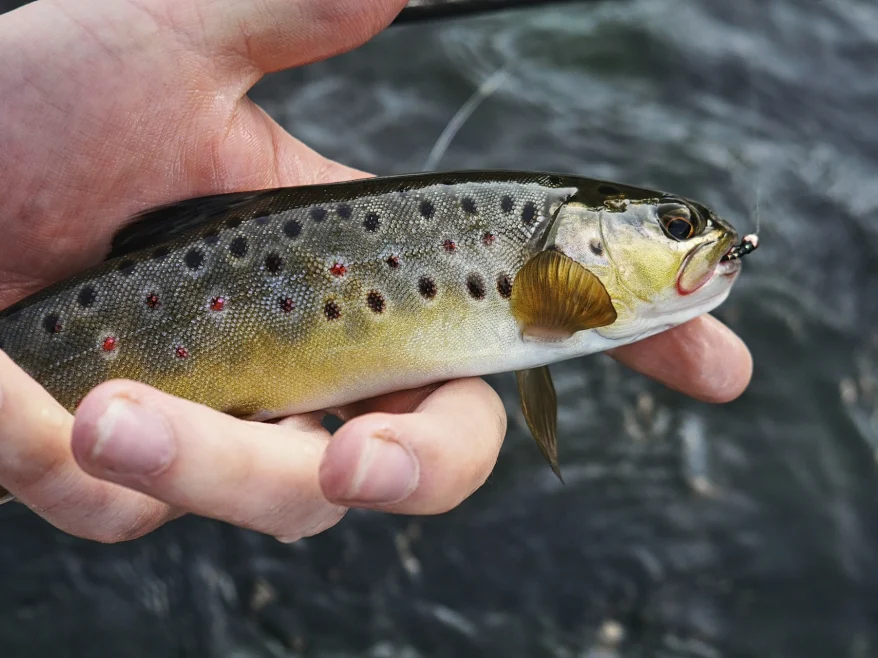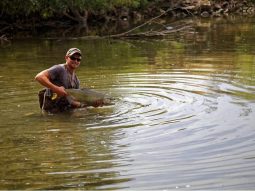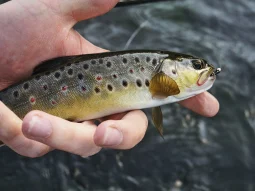Alright, let's talk knots. I know, I know, it might not sound like the most thrilling topic in the world. But trust me, if you're serious about fly fishing – especially for those beautiful, elusive trout – then understanding your knots is absolutely crucial. Think of it this way: you can have the fanciest rod, the most irresistible lure, and the perfect spot, but if your knot fails... well, you're just watching the fish of a lifetime swim away with your gear. And nobody wants that!
In this article, we will dive into:
- Choosing the right knot for your fishing setup
- Step-by-step instructions for tying the best trout fishing knots
- Tips for using trout fishing knots effectively
A good fishing knot is the unsung hero of any fishing trip. Whether you are fly fishing for rainbow trout on a smooth, flat river, or fishing for trout in fast-moving water, it's important to have the right knot for the job.
So, let's dive in and explore the essential fishing knots that will seriously up your trout game, while helping you have more fun on the water. We're talking about the difference between bragging rights and a frustrating day. Let's get started!
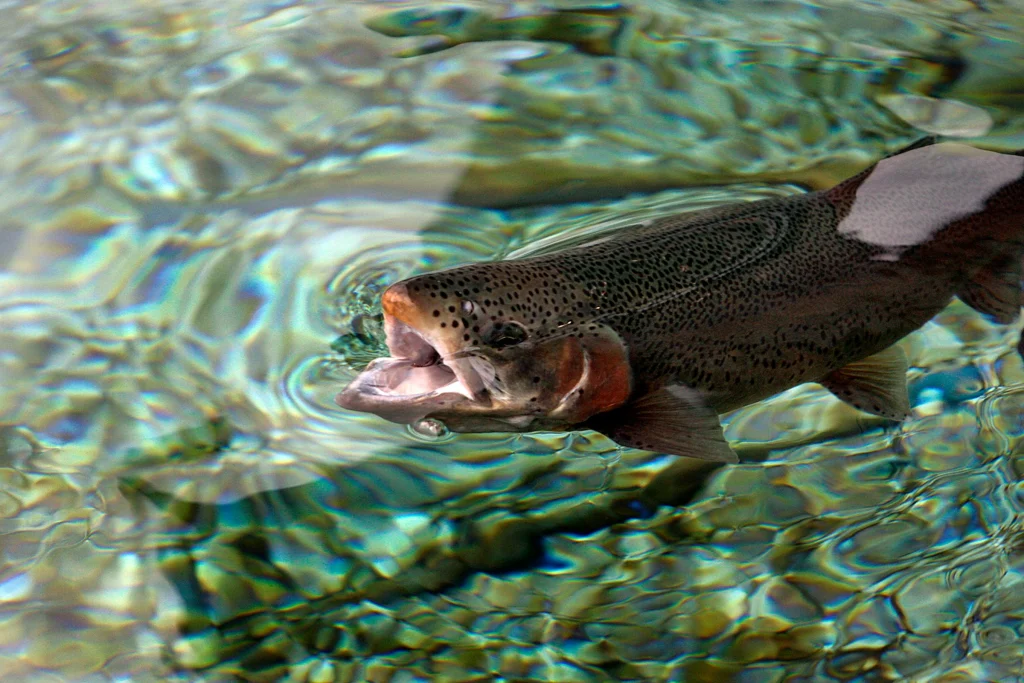
Why Knots Matter – The Trout Perspective
Why should you, as an angler, care so much about the seemingly small detail of fishing knots? Simple: trout are smart! They're easily spooked, and they don't get big by being careless. A bulky, poorly tied knot can be a dead giveaway that something's not quite right. Think of a poorly tied knot as the equivalent of wearing a neon sign that says "danger."
Beyond spooking fish, a weak knot is an obvious recipe for disaster. When that trophy trout finally takes your bait and starts peeling line, the last thing you want is to worry about your connection holding. The snap of a breaking knot is a sound no angler wants to hear. It’s a heartbreak that can be easily avoided with the proper knowledge and a bit of practice.
So, what's the solution? Knowing your knots, practicing them until they're second nature, and choosing the right one for the specific situation. Let's get into the knots you need to know.
Essential Fishing Knots for Trout and other Fish
Okay, let's get down to the nitty-gritty. Here are some of the most popular and effective fishing knots for trout, broken down with easy-to-follow instructions and tips.
The Clinch Knot: The Old Reliable
The Clinch Knot is like that trusty old friend who's always there for you. It's simple, effective, and a great all-around knot for securing your line to hooks, swivels, or lures.
How to Tie It:
- Thread the end of your line through the eye of the hook.
- Leave yourself a few inches of tag end.
- Wrap the tag end around the standing line five to seven times, working your way down toward the hook.
- Pass the tag end through the small loop you've created right above the hook eye.
- Now, this is important: Moisten the knot with a little saliva (trust me it helps!).
- Pull on both the standing line and the tag end to tighten the knot. Trim the excess tag end.
- Why It's Great for Trout: The clinch knot is strong enough for most trout fishing situations, and its relatively small profile helps prevent spooking those wary fish. It’s especially useful for rainbow trout and brook trout, due to its low profile and easy lure action.
- Pro-Tip: Always lubricate the knot before tightening. Friction is the enemy of knot strength!
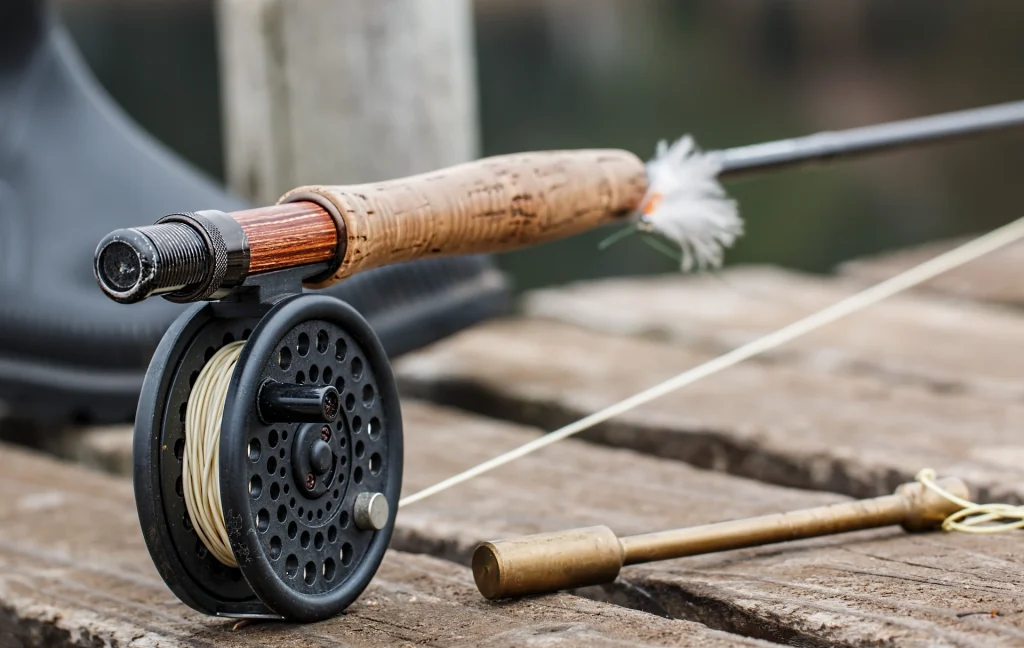
The Improved Clinch Knot: The Clinch, But Better!
Think of the Improved Clinch Knot as the Clinch Knot's more muscular cousin. It offers a bit more security, which is especially useful when you're targeting larger trout or using heavier lures.
How to Tie It:
- Start exactly like the regular Clinch Knot: Thread the line, wrap it around the standing line five to seven times.
- Now, here's the improvement: Instead of passing the tag end through just the small loop above the eye, pass it through both that small loop and the larger loop you created by wrapping.
- Moisten, tighten, and trim as before.
- Why It's Great for Trout: The extra step provides a more secure hold, reducing the chance of slippage under pressure. This is a lifesaver when you hook into a real fighter!
- Pro-Tip: This knot is fantastic when you're using lighter tippets. The added security gives you peace of mind without sacrificing finesse.
The Palomar Knot: The Powerhouse
If you're looking for pure strength and reliability, the Palomar Knot is your go-to. It's one of the strongest knots out there and relatively easy to tie, making it a favorite among serious anglers.
How to Tie It:
- Double about six inches of your line and pass the doubled line through the eye of your hook or lure.
- Tie a simple overhand knot with the doubled line, but don't tighten it yet!
- Pass the loop of the doubled line over the hook or lure.
- Moisten and tighten by pulling on both ends of the line."
- Why It's Great for Trout: The Palomar Knot maintains a high percentage of your line's breaking strength, even with lighter lines. It's perfect for targeting those cautious trout that are easily spooked by heavier lines.
- Pro-Tip: Make sure the loop passes completely over the hook or lure before tightening. This is crucial for the knot to form correctly.
The Blood Knot: The Line Connector
The Blood Knot isn't for attaching hooks or lures; it's for joining two sections of line together. This is essential for building your own leaders or for repairing broken lines on the fly (pun intended!).
How to Tie It:
- Overlap the two lines you want to connect by about six inches.
- Take one line and wrap it around the other line five to seven times.
- Now, take the other line and wrap it around the first line the same number of times, in the opposite direction.
- Bring both tag ends back towards each other and pass them through the loop created at the intersection point.
- Moisten and slowly tighten the knot by pulling on all four ends (the two standing lines and the two tag ends).
- Trim the tag ends close to the knot.
- Why It's Great for Trout: The Blood Knot creates a smooth, streamlined connection that minimizes drag in the water. This is especially important when using lighter tippets for trout.
- Pro-Tip: This knot works best when connecting lines of similar diameters. If the lines are drastically different, try a Surgeon's Knot instead.
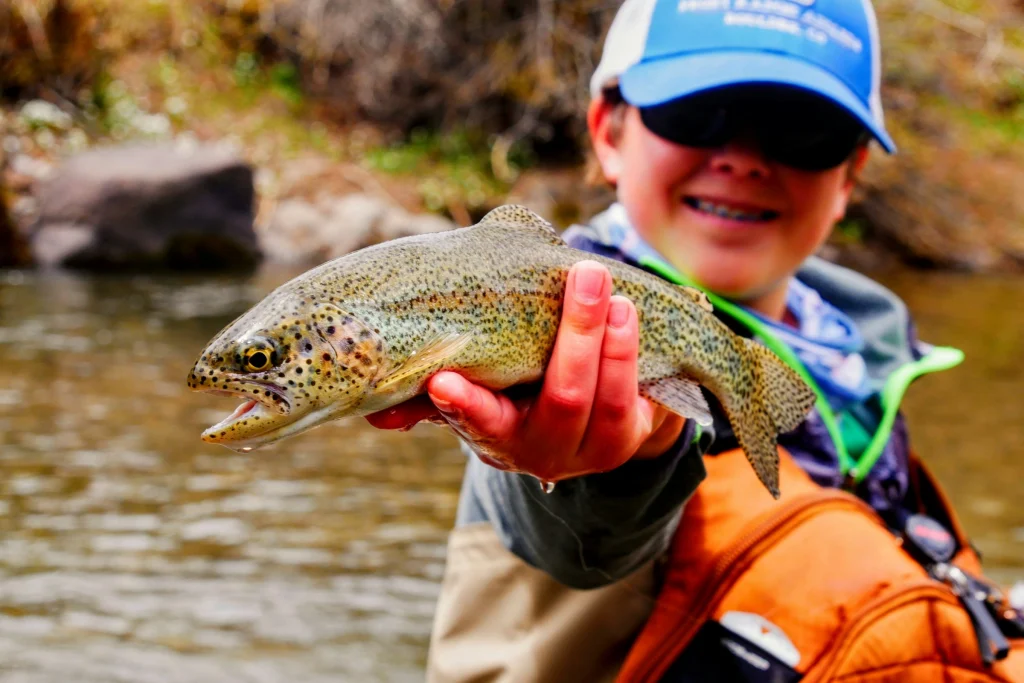
The Surgeon's Knot: The Quick Fix
The Surgeon's Knot is another line-to-line knot, but it's quicker and easier to tie than the Blood Knot, making it a great option for those moments when you need to make a fast repair on the water.
How to Tie It:
- Overlap the two lines you want to connect.
- Treat the two lines as one and tie a simple overhand knot.
- Now, pass the end of both lines through the loop of the overhand knot again." (This is what makes it a "surgeon's" knot.)
- Moisten and tighten by pulling on all four ends.
- Trim the tag ends.
- Why It's Great for Trout: The Surgeon's Knot is strong and reliable, even when connecting lines of slightly different diameters. Its quick-tying nature makes it perfect for on-the-water repairs.
- Pro-Tip: This knot is slightly bulkier than the Blood Knot, so it's best used when stealth isn't your primary concern.
The Uni Knot: The Versatile Option
The Uni Knot (also sometimes called the Duncan Loop) is a true all-rounder. You can use it to attach hooks, lures, or even connect lines together. Its versatility and ease of tying have made it a popular choice among anglers of all skill levels.
How to Tie It:
- Pass the line through the eye of the hook or lure and bring it back alongside the standing line to form a loop.
- Wrap the tag end around both the standing line and the doubled line within the loop five to seven times.
- Moisten and tighten the knot by pulling on the tag end and sliding the knot down to the eye of the hook or lure.
- Trim the tag end.
- Why It's Great for Trout: The Uni Knot is strong, reliable, and relatively easy to tie, making it a great option for beginners. Its versatility means you can use it for a variety of purposes, simplifying your tackle setup.
- Pro-Tip: When using the Uni Knot to connect two lines, simply overlap the lines and tie a Uni Knot around each line with the opposite tag end.
Tips for Knot Mastery – Becoming a Knot Ninja
Knowing how to tie these knots is only half the battle. Here are some key tips to help you become a true knot master:
- Practice, Practice, Practice!: Seriously, this is the most important tip. Don't wait until you're on the water to try and learn a new knot. Practice at home, in your living room, until you can tie each knot quickly and confidently without even thinking about it. Muscle memory is your friend here!
- Moisten Before Tightening: I know I've said it before, but it's worth repeating. Always moisten your knots before tightening them. This reduces friction and prevents the line from weakening or breaking.
- Inspect Your Knots Regularly: Before every cast, take a quick look at your knot to make sure it's in good shape. Look for any signs of wear, fraying, or slippage. If you see anything suspicious, re-tie the knot immediately.
- Trim Tag Ends Close: Leaving long tag ends dangling from your knots can spook fish and get snagged on weeds or other debris. Trim those tag ends close (but not too close!) to the knot.
- Use a Knot Tying Tool (Optional): If you have trouble gripping the line or tightening knots, consider using a knot-tying tool. These handy gadgets can make the process much easier, especially for anglers with larger fingers or arthritis.
- Match the Knot to the Situation: Not all knots are created equal. Choose the right knot for the specific type of fishing you're doing, the size of the fish you're targeting, and the type of line you're using.
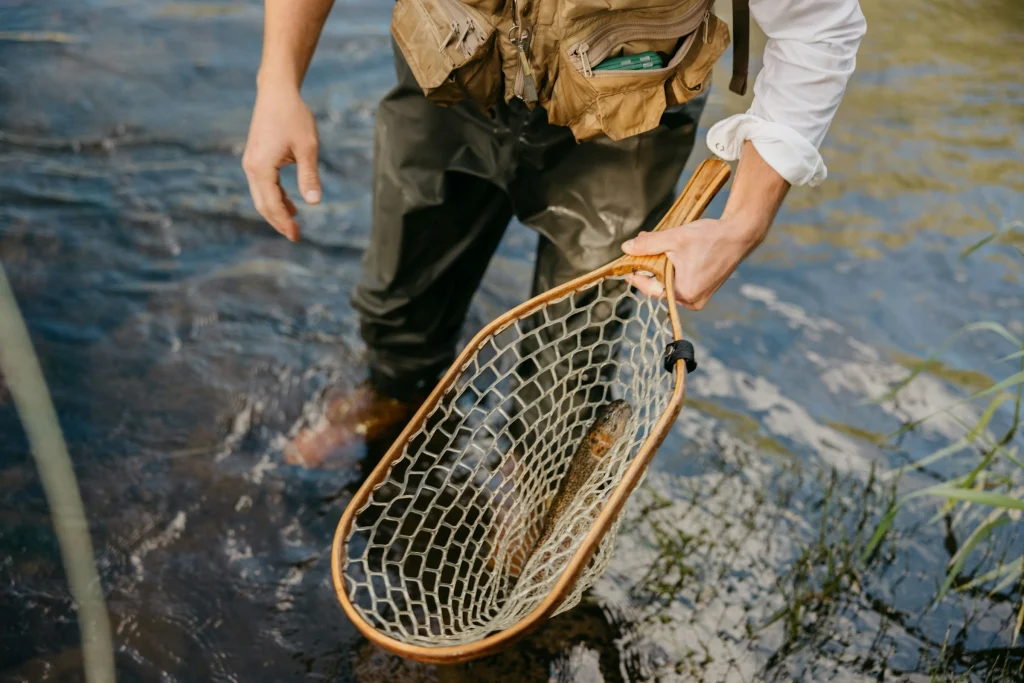
Beyond Trout – Expanding Your Knot Knowledge
While this guide focuses on trout fishing, the knots we've covered are incredibly useful in a wide range of fishing scenarios. Don't be afraid to experiment with these knots when targeting other species or fishing in different environments. The more you practice and experiment, the more confident and versatile you'll become as an angler.
Mastering fishing knots might seem like a small detail, but it can make a huge difference in your success on the water. By taking the time to learn these essential knots and practice them regularly, you'll be well on your way to landing more trout and enjoying a more rewarding fishing experience. So, grab some line, tie some knots, and get out there and start fishing!
And don't forget to share your knot-tying tips and trout-fishing stories in the comments below. We'd love to hear from you!
FAQs
What are the best fishing knots for trout fishing?
The best fishing knots for trout fishing often include the improved clinch knot for its reliability, the Palomar knot for its strength, and the non-slip loop knot for presenting lures naturally.
What is the improved clinch knot?
The improved clinch knot is a popular and reliable knot commonly used in trout fishing to secure a fishing line to a hook, lure, or swivel. It's favored for its strength and simplicity.
What is the Palomar knot?
The Palomar knot is a strong and easy-to-tie knot that's well-suited for trout fishing. It's particularly valued for maintaining a high percentage of the line's original strength.
What is the non-slip loop knot?
The non-slip loop knot is a versatile knot that allows for natural movement of the bait or lure, making it especially effective for presenting artificial lures to trout in a lifelike manner.
Why are these knots recommended for trout fishing?
These knots are recommended for trout fishing because they're strong, reliable, relatively easy to tie, and known for maintaining a high percentage of the line's original strength, which is crucial when targeting trout.


